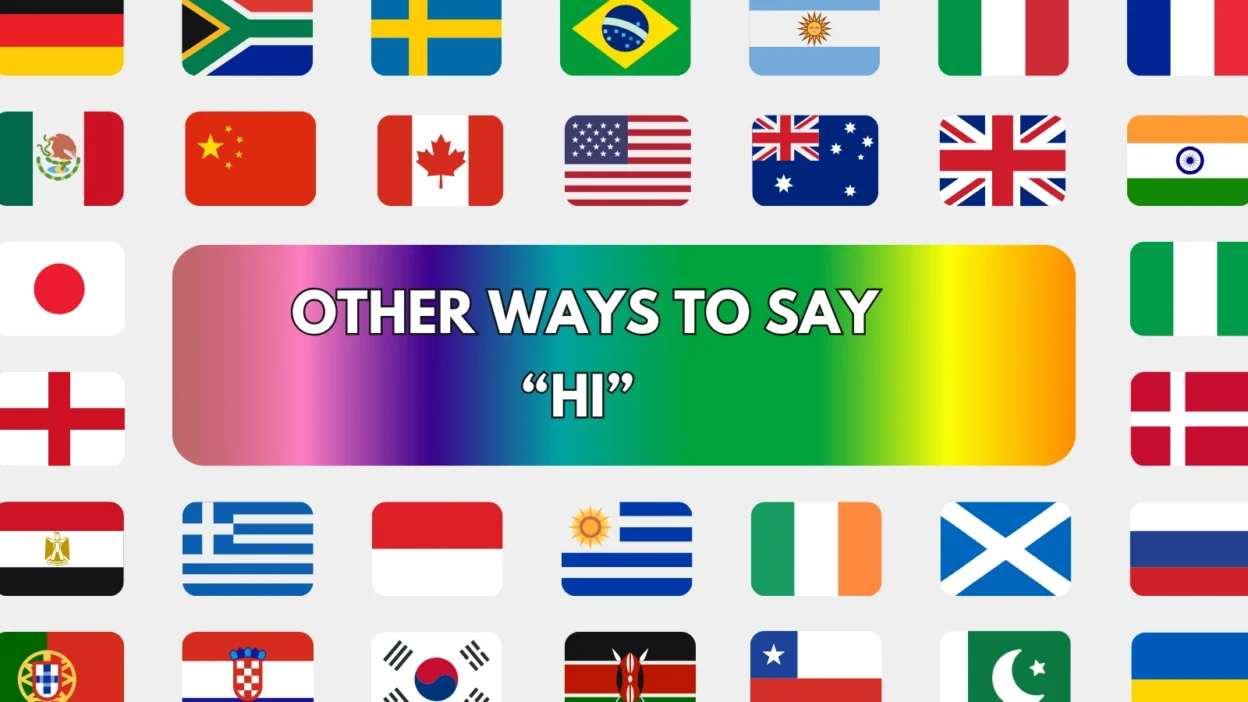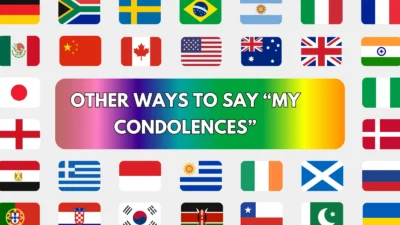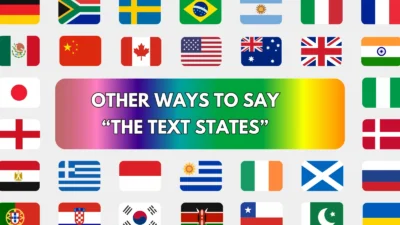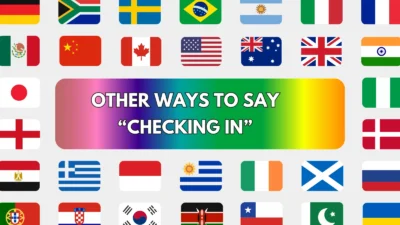“Hi” is one of the most common greetings in the English language. It’s short, simple, and friendly—but in professional, creative, or varied social settings, repeating “hi” can feel monotonous or too casual. Whether you’re writing emails, chatting online, or greeting someone in person, using different phrases can help you sound more engaging, polite, or enthusiastic depending on the situation.
Here are 25 alternative ways to say “Hi”, each with its meaning, a detailed explanation, a usage example, best-fit scenario, and the tone it conveys.
1. Hello
Meaning
A universal and polite way to greet someone.
Detailed Explanation
“Hello” is slightly more formal than “hi” and works in virtually all social and professional situations.
Scenario Example
Hello, it’s nice to meet you.
Best Use
Emails, meetings, phone calls.
Tone
Neutral, polite.
2. Hey
Meaning
A casual and friendly greeting.
Detailed Explanation
Often used among friends, “hey” feels laid-back and relaxed, but can be too informal for professional settings.
Scenario Example
Hey! Long time no see.
Best Use
Texting, casual conversations.
Tone
Friendly, informal.
3. Greetings
Meaning
A formal or slightly old-fashioned way to say hello.
Detailed Explanation
“Greetings” can sound quirky, warm, or ceremonial depending on how it’s used.
Scenario Example
Greetings, colleagues—let’s begin the session.
Best Use
Presentations, announcements, creative writing.
Tone
Formal, classic.
4. Hi There
Meaning
A friendly and warm variation of “hi.”
Detailed Explanation
“Hi there” softens the greeting and makes it sound approachable.
Scenario Example
Hi there! How can I help you today?
Best Use
Customer service, casual emails.
Tone
Welcoming, cheerful.
5. Howdy
Meaning
An informal and regional greeting (common in the American South and West).
Detailed Explanation
Adds a touch of personality or playful friendliness.
Scenario Example
Howdy, partner! Ready for today’s adventure?
Best Use
Casual, humorous, or regional conversations.
Tone
Friendly, folksy.
6. What’s Up?
Meaning
A casual way of asking how someone is or what they’re doing.
Detailed Explanation
Informal, often used between friends or peers.
Scenario Example
What’s up? Haven’t seen you in a while.
Best Use
Social media, text messaging.
Tone
Relaxed, conversational.
7. Good Morning
Meaning
A time-specific greeting for the early part of the day.
Detailed Explanation
Professional and polite; works well in formal and casual settings alike.
Scenario Example
Good morning, team. Let’s get started.
Best Use
Emails, meetings, customer service.
Tone
Polite, professional.
8. Good Afternoon
Meaning
A greeting used in the middle of the day.
Detailed Explanation
A courteous and professional way to greet someone after noon.
Scenario Example
Good afternoon, how may I assist you?
Best Use
Formal emails, office environments.
Tone
Polished, respectful.
9. Good Evening
Meaning
A greeting for the latter part of the day.
Detailed Explanation
More formal, often used at events or in service roles.
Scenario Example
Good evening, and welcome to tonight’s performance.
Best Use
Hospitality, events, formal introductions.
Tone
Elegant, warm.
10. Yo
Meaning
A very casual, urban-style greeting.
Detailed Explanation
Used in friendly, informal, or youthful contexts.
Scenario Example
Yo! You ready for the game?
Best Use
Texting, casual chats with close friends.
Tone
Playful, energetic.
11. Sup
Meaning
Shortened version of “What’s up?”
Detailed Explanation
Extremely informal, often used among peers or online.
Scenario Example
Sup? Just chilling over here.
Best Use
Social media, texting.
Tone
Casual, slangy.
12. How’s it going?
Meaning
A greeting that also asks how someone is doing.
Detailed Explanation
Blends greeting with small talk in a casual tone.
Scenario Example
Hey, how’s it going?
Best Use
Informal conversations, acquaintances.
Tone
Approachable, relaxed.
13. Welcome
Meaning
A friendly greeting to make someone feel at ease or included.
Detailed Explanation
Perfect for when someone is entering a new place or group.
Scenario Example
Welcome to our team! We’re excited to have you.
Best Use
Workplaces, events, emails.
Tone
Warm, inclusive.
14. Hi Everyone
Meaning
A group-friendly way to greet multiple people.
Detailed Explanation
Great for opening messages or meetings when addressing a team or audience.
Scenario Example
Hi everyone, just a quick update before we begin.
Best Use
Emails, presentations.
Tone
Professional, inclusive.
15. Salutations
Meaning
A formal and literary way of saying hello.
Detailed Explanation
Not commonly used in daily speech, but adds character in writing.
Scenario Example
Salutations, dear readers.
Best Use
Creative writing, themed events.
Tone
Unique, intellectual.
16. Yo There
Meaning
A mix of “yo” and “hi there”—very casual and lighthearted.
Detailed Explanation
Adds flair to a casual greeting.
Scenario Example
Yo there! How’s life treating you?
Best Use
Texting, fun interactions.
Tone
Playful, modern.
17. How’s Everything?
Meaning
A greeting that shows concern or interest in someone’s well-being.
Detailed Explanation
Great for opening casual or semi-formal conversations.
Scenario Example
Hi! How’s everything with you?
Best Use
Check-ins, friendly conversations.
Tone
Caring, warm.
18. Hey There
Meaning
A friendly twist on “hi there.”
Detailed Explanation
Casual, yet a little more enthusiastic than just “hi.”
Scenario Example
Hey there! Hope your week is going great.
Best Use
Emails, messaging apps.
Tone
Friendly, upbeat.
19. Long Time No See
Meaning
A greeting for someone you haven’t spoken to in a while.
Detailed Explanation
Adds nostalgia and familiarity to the greeting.
Scenario Example
Hey! Long time no see—how have you been?
Best Use
Old friends, acquaintances.
Tone
Nostalgic, personal.
20. How Are You?
Meaning
A greeting that also checks in on someone’s well-being.
Detailed Explanation
A versatile opener that works in almost any situation.
Scenario Example
Hello, how are you today?
Best Use
Emails, calls, everyday chats.
Tone
Polite, kind.
21. Yo Buddy
Meaning
A very casual greeting with added warmth.
Detailed Explanation
Works well for friends or teammates.
Scenario Example
Yo buddy! Ready for practice?
Best Use
Sports teams, close friends.
Tone
Casual, cheerful.
22. Top of the Morning to You
Meaning
An old-fashioned Irish-style greeting for morning.
Detailed Explanation
Fun and playful, but rarely used in serious settings.
Scenario Example
Top of the morning to you! Ready for coffee?
Best Use
Friendly banter, themed events.
Tone
Whimsical, humorous.
23. Wazzup
Meaning
Slang for “what’s up,” often said in a humorous or exaggerated way.
Detailed Explanation
Used to sound goofy or expressive.
Scenario Example
Wazzup! You made it!
Best Use
Close friends, jokes.
Tone
Comedic, very casual.
24. Yo Yo Yo
Meaning
A humorous or exaggerated way to say “hi.”
Detailed Explanation
Used to create a fun, lighthearted moment.
Scenario Example
Yo yo yo! Look who’s here!
Best Use
Jokes, casual greetings.
Tone
Silly, playful.
25. Hello There
Meaning
A slightly formal but friendly way to greet someone.
Detailed Explanation
Feels polite and is a great middle ground between “hi” and “hello.”
Scenario Example
Hello there! Thanks for joining us today.
Best Use
Customer interactions, polite introductions.
Tone
Friendly, neutral.
Conclusion
While “hi” is always reliable, exploring alternative greetings lets you better express your tone, relationship, and context. From the professional “hello” to the casual “yo” and the cheerful “hi there,” these 25 variations of “hi” help you add personality and precision to your everyday communication.




